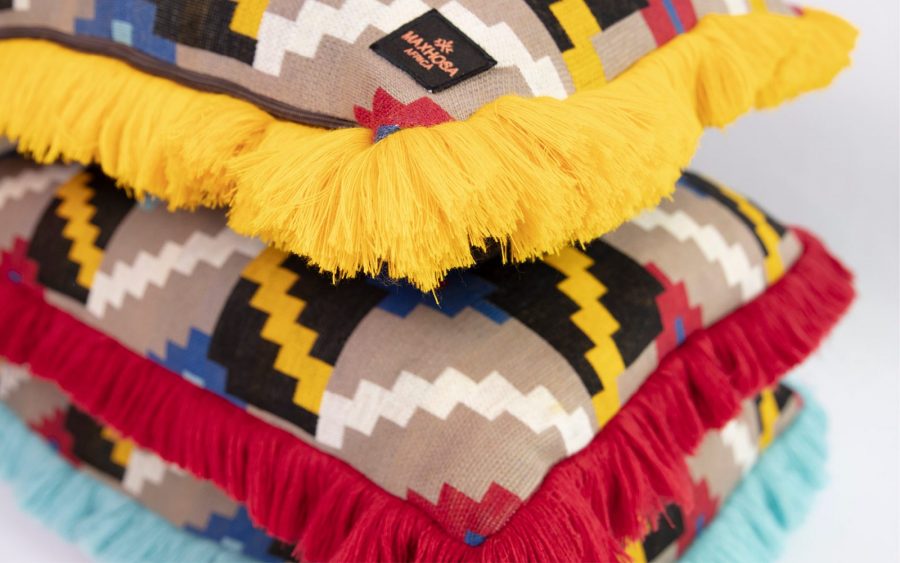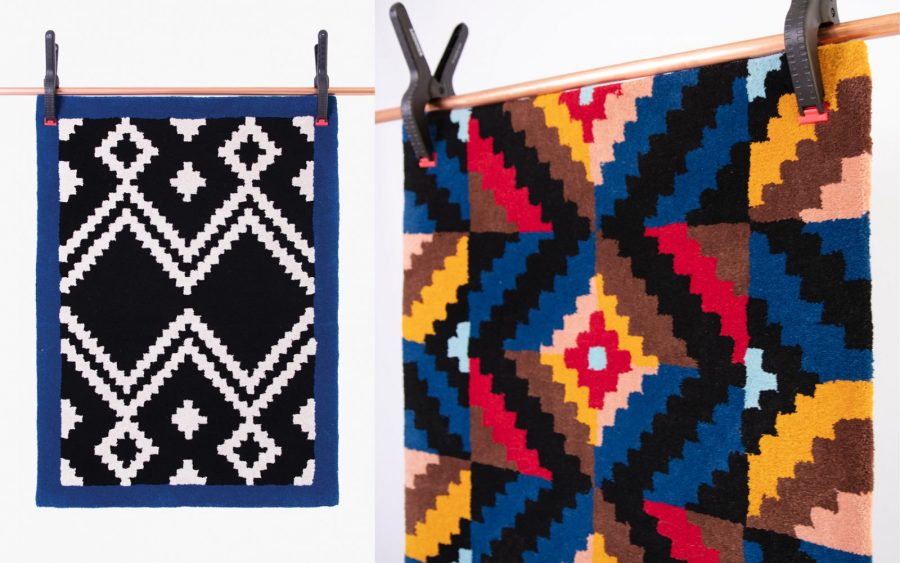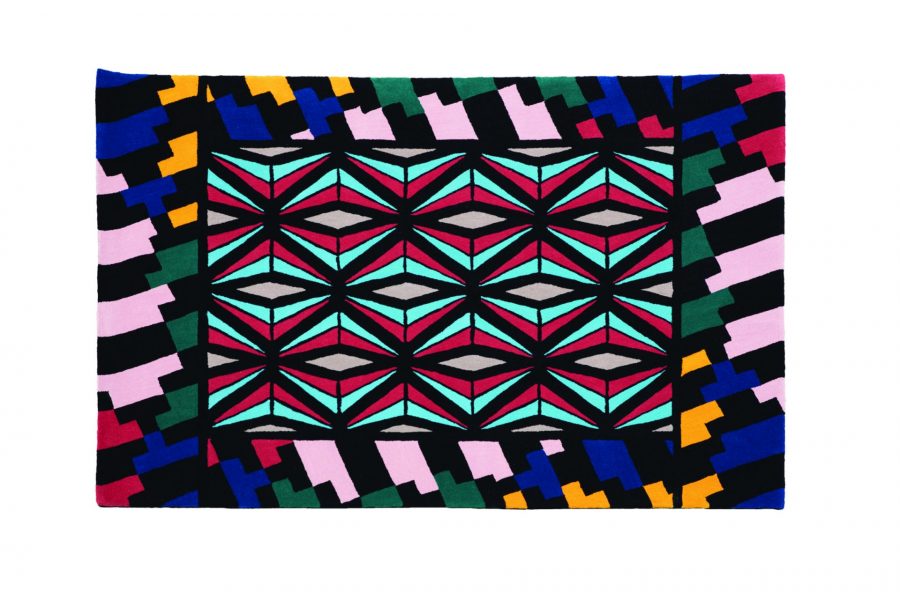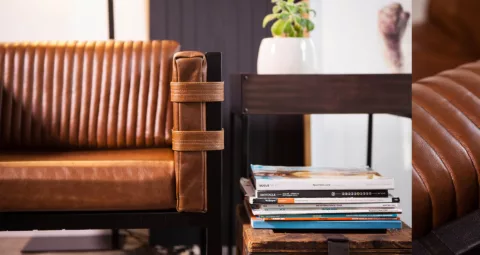Designer-maker spotlight: MaXhosa
Text: Zanele Kumalo

Laduma Ngxokolo has always had a clear picture of what MaXhosa would become. As the owner, founder and designer of the Xhosa-inspired knitwear brand, which embraces luxury as effortlessly as it does heritage, he says he always ‘foresaw expanding it to a lot of lifestyle utilities as well, [such as] rugs, carpets, towels and also into spaces’. His main goal? To be Africa’s leading luxe, mass heritage and lifestyle brand.
MaXhosa is recognised globally as the fashion export from SA and even the continent; celebs such as Beyoncé, Alicia Keys, Swizz Beatz and Raphael Saadiq have all endorsed his clothing items along with a huge vote of confidence from those who drive the fashion narrative at top fashion publications including British Vogue.
South Africans have also long proudly supported him especially on select red carpets.
Now, though, it’s become not just about wearing MaXhosa but living MaXhosa. Earlier this year, you could accessorise your iPhone with a beaded cover (part of a collaboration with designer Vukile Batyi) and last year he produced his first rugs. Most recently, he has launched a homeware range as part of his vision ‘to move towards the luxury space in homeware and change black people’s homes in Africa in terms of adorning them with our own items’. For now, the range incorporates rugs, cushions, throws and upholstery, as well as wallpaper – which, incidentally, scooped the award for Best Surface Design at this year’s 100% Design.

His favourite pieces from the collection, done in partnership with Thabisa Mjo, are ‘the elongated scatter cushions, which can be used as functional art – they allow the space to pop, but can also make for a comfortable space to sit, lay your head as well as being a standalone piece of decor,’ he says.
Laduma describes Thabisa as a remarkable designer who is well-versed in the interior-decor space. Says Laduma, ‘We both had designs that won the Most Beautiful Object in South Africa. That was the best place to start. We then looked at how things could work from a production standpoint. We meet and share most ideas through texts and images. Renders are designed, so there is an image of what the final product will look like and we communicate on the material needed and the look and feel.
Thabisa created a framework from her studio, and we also created our part of the collaboration from our factory. The other ideas she brings are about the practical side of designing pieces for the home, as well as how they may be displayed.’

There will also be curtaining, which is in the prototype phase to see what will work for different kinds of homes. The team spends most of the day prototyping so they can test their work in different scenarios. Laduma says, ‘We are going to stick to our core, which is knits, but will also venture in all other types of materials [using their own technology] to be able to knit actual images. This helps expand the curtaining to go beyond just patterns that we make, so the potential to create works is limitless.’
Laduma is inspired by the growing trend of Afro-minimalism. His design ethos is about using form to follow function, ‘as in order to break or bend rules, you have to know them’. And the homeware range follows from his fashion collections because they use the same pattern and colours. He adds, though, that ‘the format is different since the approach is with a home space and not just the body in mind, so you try to create something that will complement that person’s life, as well as pushing to see how they will relate to the items in the many years to come. At times with clothes, it is seasonal.’
His design process starts by hand, while he listens to music like DJ Maphorisa, Moonchild Sanelly and Beyoncé’s Lion King album to get him in the right space and frame of mind to create. ‘I like the freehand approach to sketching out ideas until I get the one I like. I then move towards fleshing out the ideas in Illustrator, if we want to see it rendered as a design. This helps me find out which material can be best used, and what kind of feel we are looking for. When we know which materials we need to use, we then send the design as a folder to be programmed. The knitting starts and the items are sent for the shaping and sizing.
A similar process is applied to the homeware. I always have colours in mind as they help me find the perfect fit for patterns. The joy about creating so many variations of patterns earlier on in my career is that now I have a universe of patterns to choose from. But we always make limited designs to give a form of exclusivity to the patrons who purchase the items.
Laduma says it’s taken quite a few months to get the homeware range off the ground as ‘lead times can be very long’, and they try to do everything in-house. Despite those challenges, what has helped him on his brand’s journey has included building a new factory and atelier housed in a building in downtown Johannesburg which he co-owns with the artist Nelson Makamo and DJ and entrepreneur, Black Coffee.

And it’s been important for him to enjoy working and use others’ successes as motivation. ‘I always believe that to be passionate about design, you must have fun with it, as it shows in the end product. I am a very visual person, so I am inspired and moved by just scrolling through social media and seeing people achieve tremendous feats. This moves me to create as well and I love seeing people thrive. I do believe
I create with the idea of honouring that,’ he says.

Laduma believes that because what he does is to instill black pride, it also has to show in what he comes up with, and so he’ll make a statement piece that answers what’s happening socio-politically. ‘In all the collections, they were created to take a stand, or be an answer to an issue. I believe, as designers, we are given the power to make people feel something.’
Laduma also forecasts a lot with his designs. ‘I design many things and see ideas are archived for the future. In my Master’s studies, one of the biggest tasks we had was to look at how people will be interacting with designs in the future.’
In terms of his future, considering he takes inspiration from brands such as Missoni and Gucci and that he wants to leave behind a legacy, could a Hotel MaXhosa or MaXhosa Decor be the next thing to look forward to, from the team?


